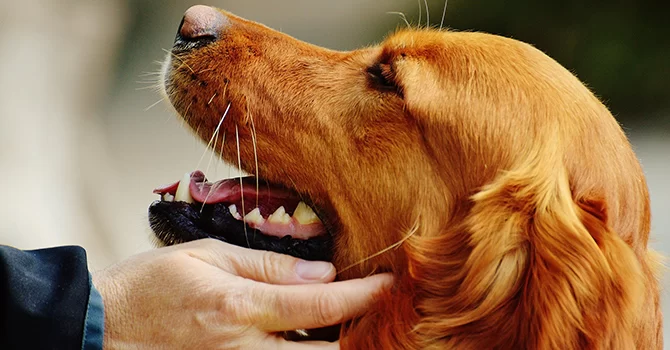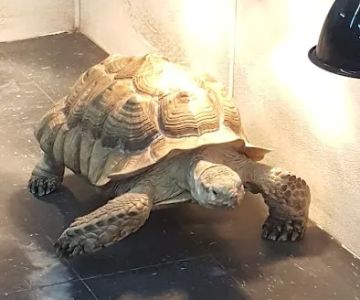Effective Strategies for Managing Pain in Older Pets
As our pets age, they may start to experience various health issues, including pain. It's a heartbreaking reality that many pet owners face, but the good news is that managing pain in older pets is possible. I’ve been through this journey with my own furry companions and learned a lot along the way. In this article, I’ll share the strategies I’ve used to help my senior pets live their golden years as comfortably as possible.
1. Understanding Pain in Older Pets
Pain in older pets is often a result of arthritis, joint problems, or other age-related conditions like hip dysplasia, dental disease, or even cancer. Pets can’t always vocalize their discomfort, so it’s essential to know the signs. I’ve noticed in my own pets that they become less active, reluctant to jump, or they have trouble climbing stairs. Sometimes, they even show signs of irritability or unusual behavior. These subtle changes are often the first indications of pain, and paying close attention can make all the difference.
2. Observing Symptoms in Your Senior Pet
Knowing what to look for is key in identifying pain in older pets. Here are some common signs:
- Decreased activity: If your pet used to love playing or going for walks and now shows reluctance, it could be a sign of discomfort.
- Difficulty moving: Limping, stiffness, or trouble getting up after resting are often associated with joint pain or arthritis.
- Behavioral changes: Pain can make pets more irritable, anxious, or withdrawn.
- Changes in eating habits: If your pet suddenly becomes picky or loses interest in food, it might be because they’re in pain.
My own dog, Daisy, became increasingly less active as she aged, and I first noticed it when she started hesitating to climb the stairs. It took some time, but once I understood that her pain was affecting her mobility, I sought help from my veterinarian to find a solution.
3. Consulting Your Veterinarian
Whenever I suspect my pets are in pain, the first step is always to consult a veterinarian. A professional will be able to diagnose the underlying cause of the pain and recommend the appropriate treatment. In Daisy’s case, she was diagnosed with arthritis, which is common in older dogs. Your vet may suggest X-rays or other diagnostic tests to identify any joint issues, bone problems, or other conditions contributing to your pet’s discomfort.
4. Pain Relief Medication
Once we knew what was causing Daisy’s pain, the vet prescribed nonsteroidal anti-inflammatory drugs (NSAIDs) to help reduce inflammation and ease her discomfort. These medications are specifically designed for pets, and I’ve found them to be very effective. However, it’s important to always follow the dosage recommendations carefully, as giving human medications to pets can be dangerous. Your vet will likely have a pain relief plan tailored to your pet’s specific needs, and it’s crucial to adhere to their guidance.
5. Joint Supplements and Diet
In addition to medication, joint supplements can also help improve your senior pet’s mobility and comfort. Supplements containing glucosamine, chondroitin, and omega-3 fatty acids can promote joint health and reduce inflammation. I’ve been giving Daisy a joint supplement for several months now, and I’ve noticed a significant improvement in her ability to move around. Along with these supplements, feeding your pet a well-balanced diet can support overall health and reduce inflammation in the body.
6. Providing a Comfortable Living Environment
Making sure your senior pet’s living environment is comfortable is another crucial aspect of pain management. For example, providing soft bedding can reduce pressure on aching joints. I made sure to get Daisy an orthopedic dog bed, and it’s been a game-changer. Placing rugs or non-slip mats around the house can also help prevent slips and falls, which can be painful and dangerous for older pets. If your pet has trouble walking, you might want to consider using ramps or stairs to help them access higher places like the couch or your bed.
7. Physical Therapy and Massage
Some pets benefit from physical therapy and massage. I was skeptical at first, but after a few sessions with a certified pet massage therapist, I saw improvement in Daisy’s mobility and a decrease in her stiffness. Physical therapy can strengthen muscles and improve flexibility, which is particularly helpful for pets with arthritis or other joint problems. Regular gentle massage can also help alleviate muscle tension and promote circulation, leading to better comfort for your pet.
8. Alternative Treatments
In addition to traditional methods, some pet owners have had success with alternative treatments such as acupuncture or laser therapy. While these treatments might not be suitable for every pet, they can be worth exploring, especially if your pet’s pain is not fully relieved by conventional medications. I decided to try acupuncture for Daisy, and while it didn’t completely eliminate her pain, it did seem to improve her mobility and overall well-being.
9. Monitoring and Adjusting the Pain Management Plan
Managing pain in older pets is an ongoing process. What works for one pet may not work for another, so it’s essential to stay in touch with your vet and monitor your pet’s progress. If you notice any changes in your pet’s condition or behavior, be sure to reach out to your veterinarian. Daisy’s treatment plan evolved over time as her needs changed, and I was always careful to make adjustments to ensure her comfort and quality of life.
10. The Importance of Love and Companionship
Aside from all the medical and therapeutic approaches, I’ve found that the most important thing is giving my senior pets lots of love and attention. They may not be as spry as they once were, but they still crave companionship and affection. Spending time with Daisy, giving her gentle pets, and ensuring she feels safe and loved is the best way I know to improve her quality of life. Older pets need our support and care more than ever, and they’ll always reward us with their unwavering loyalty.
In conclusion, managing pain in older pets is a comprehensive process that involves understanding their needs, consulting professionals, and implementing strategies that work for them. Whether it’s medication, therapy, or simply making their environment more comfortable, there are numerous ways we can help our senior pets live pain-free and enjoy their golden years. I’ve seen firsthand the positive impact these approaches have had on Daisy, and I’m hopeful that others can benefit from these insights too. Take the time to listen to your pets, and you’ll be rewarded with their love and gratitude.












